Spring 2020 Newsletter
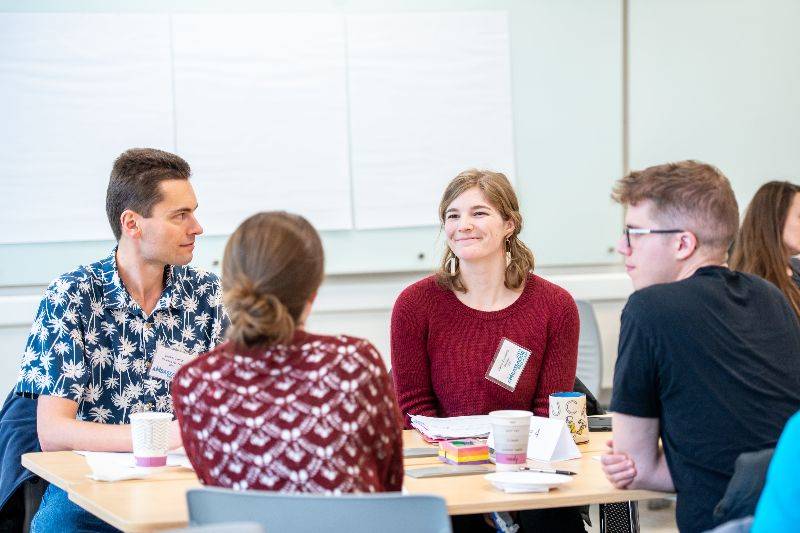
Letter From STEMAP Team
Dear STEM Ambassadors and Community Partners,
We hope everyone is staying safe and healthy this Spring! We have an exciting newsletter this quarter, with articles featuring interviews with STEMAP Co-PIs Julie Risien and John Besley. These articles explore important topics within science communication, such as broader impacts, impact identity, and communication goals and objectives.
You can also read about the workshops our 2020 cohort attended, where they learned how to design and implement engagement activities.
The STEM Community Alliance Program, another project in the Nadkarni Lab, has been hard at work building a new series called Mission STEMCAP. Read on for a description of the series.
STEMAP Program Director Nalini Nadkarni was featured in the Salt Lake Tribune and on RadioWest. In both places, she discussed the challenges of disturbance and the process of recovery.
Finally, we have a reflection from Hanna Clements, an Ambassador in the Chemistry Department on her engagement activity.
We thank all Ambassadors and community members for their continued support!
Nalini Nadkarni, Director
Caitlin Weber, Program Manager
Megan Young, Program Coordinator
Marissa Higbee, Intern
STEM Ambassador Program Response to COVID-19
In response to COVID-19, the STEM Ambassador Program has made the following adjustments to ensure the safety of our community:
- All STEMAP staff are working remotely.
- All in-person engagement activities and meetings are postponed. Ambassadors should check in with focal groups via phone or e-mail and notify STEMAP of any plans to shift activities to remote formats.
- The deadline for 2020 Ambassadors to complete their engagement activities has been extended to 8 weeks from the date University of Utah travel restrictions are lifted.
We will continue to monitor changes to the University’s guidelines and update this timeline as needed. Visit https://www.cdc.gov/coronavirus/2019-nCoV/index.html#travel for the latest University of Utah guidelines.
Update on Spring 2020 Ambassadors

Ambassadors gathered prior to University closures to participate in two STEMAP training workshops.
During the Design workshop, Ambassadors reflected on what they’ve learned about the focal groups they wished to engage and brainstormed ideas for engagement activities. They took time and material constraints into account while developing creative engagement ideas.
During the Engage workshop, Ambassadors built skills to effectively engage with focal groups which ranged from youth in custody, to yoga instructors, to stamp collectors. They explored ways to facilitate dialogue through asking questions and how to discuss science concepts in a personalized way by avoiding jargon.
In person activities are on hold for this cohort. We look forward to re-connecting online and in-person, once it is safe to do so!
Researcher Spotlights
STEMAP’s intern, Marissa Higbee, spoke with two members of the STEMAP research team about public engagement. Read about their conversations below!
STEMAP Co-PI Julie Risien
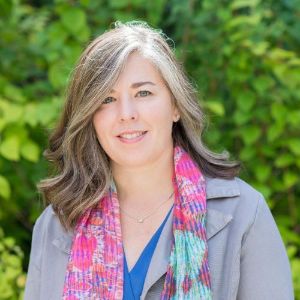
by Marissa Higbee
When submitting proposals to the National Science Foundation, scientists are required to describe the “Broader Impacts” (BI) or societal impacts of their work in addition to highlighting their project’s intellectual merit. BI can encompass a range of activities including broadening participation in science, enhancing infrastructure for research and education, and facilitating public engagement with science.
Scientists draw on their “research identity” (e.g., identity as a microbiologist interested in metabolism) to propose new research. Likewise, scientists can form a self-concept around their BI work. I interviewed Julie Risien, Associate Director for the STEM Research Center at Oregon State University and co-PI for Advancing Research Impact in Society (ARIS) and STEMAP co-PI, to learn how scientists can draw on their research, personal interests, and experiences to develop their “impact identity” for BI and public engagement.
BI is sometimes viewed by scientists as an “accessory” to their career or a box that must be checked on a proposal submission. Pressure to “publish or perish” and time constraints may discourage scientists from investing effort in BI. Julie encourages scientists to think about BI as something lifelong and embedded in their career: focusing on the impact their science leaves behind and how to change what their discipline sees as successful by being their full, authentic self.
Julie describes BI as an opportunity “express other parts of [the scientist’s] identity that they don’t necessarily express within their disciplinary reward structure”. Within academic culture, it is common for scientists to only express their research identity. Expression of an impact identity comes with rewards, but also a set of unique challenges Julie highlighted a consequence of this: “I think the risk of the narrow path of academia is that we filter out people with creative ideas…if everyone who succeeds looks just like the generation before, science becomes devoid of creative solutions”. The power of nurturing BI and expression of multi-faceted identity is in retaining creativity and diversity in the scientific enterprise. When scientists also present themselves as mothers, musicians, or first generation college-goers, they become authentic and relatable. “If a scientist is able to share their full, authentic self, then they are meeting that psychological need that they may not get from other parts of their profession,” she said.
Julie remarked that the STEM Ambassador Program offers professional development for scientists that draws on impact identity. She shared two pieces of advice for scientists developing their impact identities for engagement:
- Take small steps and try things out. Science is a creative process, and that often involves failure. If it doesn’t look like you’re connecting and helping people engage with your science in authentic ways, don’t be afraid to step back and try another approach.
- Show humility when engaging, and remember why you want to communicate science. Strive to build relationships and facilitate dialogue—effective communication is a two-way exchange. By building relationships with the community, scientists can gain the trust and build understanding so they may more effectively communicate. One of the highlights of the STEM Ambassador Program is the immersion process, where scientists are able to familiarize themselves with the context of the community they want to partner with and co-develop engagement activities. This allows scientists to introspectively search for parts of their identity that resonate with their audience and allows them to develop other ways of knowing and understanding the world.
Check out The Center for Advancing Research Impact in Society (ARIS) for more BI resources!
More information impact identity can be found here: https://academic.oup.com/icb/article/58/1/58/4985726
STEMAP Co-PI John Besley
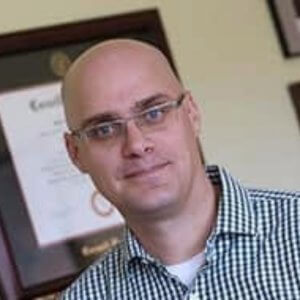
By Marissa Higbee
Leaders at the American Association for the Advancement of Science, the National Science Foundation, and other major science organizations are calling on scientists to engage the public. Scientists are responding with enthusiasm by participating in training programs and carrying out activities ranging from public presentations to hands-on demonstrations. These efforts have prompted communication researchers to ask, “What do we hope to achieve through science communication, and how do we get there?”
Science communication is often conflated with science education. However, the two differ in their goals. In education, the primary goal is to increase science literacy (e.g., how photosynthesis works). Science communication, on the other hand, does not necessarily prioritize science literacy. Instead, science communicators may seek to achieve a range of goals, such as building support for science funding or promoting science-based decision making. These goals might not be achieved by conveying science knowledge alone.
I interviewed John Besley, Professor of Public Relations at Michigan State University and STEMAP co-PI, to learn more about how scientists can approach science communication. “I study public opinion about science, and in the last 10 years, I’ve gotten interested in how to help scientists communicate in ways that lets them achieve their goals,” John said. John is interested in the relationship between scientists and the communities they live in, whether they be local, regional, or international. He provided insight on developing science communication goals and objectives for scientists, and how to distinguish between the two.
The terms “goals” and “objectives” are often used interchangeably. John defines communication goals as behaviors that scientists want the community to consider performing. These might include public health initiatives like hand washing or getting vaccinated to reduce the spread of disease.
John defines communication objectives as: “the beliefs, feelings, and frames scientists can communicate directly…to affect behavior.” For example, if you want individuals to wash their hands (a goal), you may need them to believe that there’s a benefit to hand washing (an objective). This can be done through peer influence (conveying that other people in the community are washing their hands), or forming trust (I trust this scientist, so I am going to listen to them).
Some goals may take several interactions over a long period of time to achieve, such as prompting people to turn to science for answers. It is unlikely that any one interaction or event would shift whether someone turns to science first. Instead, achieving this goal requires many positive interactions over time to build trust and highlight shared values. Scientists can work together to contribute to this goal by making positive connections in their communities. Frequent positive interactions with scientists over time may prompt members of the public to look to science for information and guidance.
John shared a few pieces of advice for scientists in developing communication goals and objectives:
- Set communication goals first and then identify the objectives needed to achieve those goals.
- Learn about who you are communicating with—who they are, what they are good at, and what they care about. Science communication is a two-way exchange of ideas and identities, and showing that you understand the context of your audience is key to building trust with them. You also have to be open to changing how you think about an issue and recognizing that science isn’t the only reason people make decisions.
- Collaborate with experienced communicators. Scientists don’t need to find their communication goals and objectives alone. The purpose of groups like the STEM Ambassador Program is to bring scientists together to set their communication goals and objectives and build the skills needed to achieve them.
Solving Grand Challenges in Mission STEMCAP
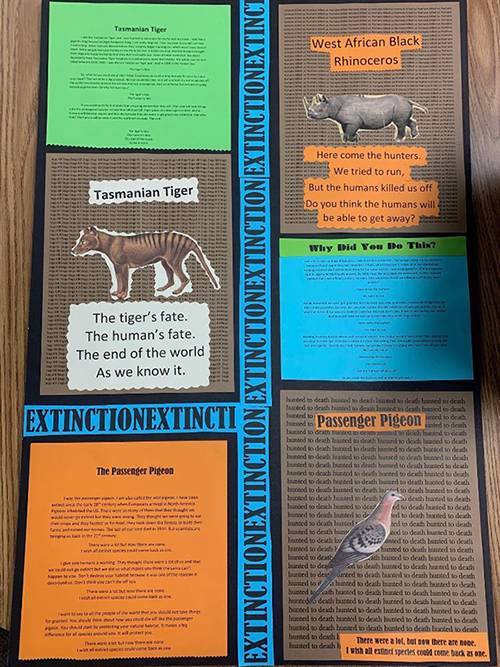
The STEM Community Alliance Program (STEMCAP), The STEM Ambassador Program’s sister project, launched a new workshop series this year called Mission STEMCAP. This new series takes its inspiration from Stanford University’s Grand Challenges, the top global problems identified by Stanford that humanity faces. The five topics selected by STEMCAP are Extinction, Biodiversity Loss, Climate Change, Pollution, and Overconsumption.
Prior to school and university closures, Mission STEMCAP completed the Extinction, Biodiversity Loss, and Climate Change sessions at various youth-in-custody facilities in the Salt Lake area. Each session was comprised of a relevant documentary, a presentation from a scientist, creative projects (e.g. poetry, writing and visual art), and a letter writing session where students connected with non-profits working on a Grand Challenge.
The remaining sessions for Mission STEMCAP are currently on hold in response to COVID-19. Thanks to all the scientists, artists, writers, and teachers who participated!
Nalini Nadkarni on Disturbance and Recovery
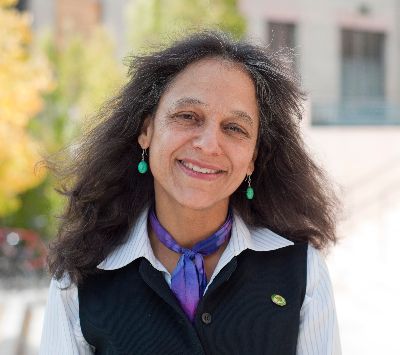
Recently, STEMAP Director Nalini Nadkarni made an appearance on RadioWest, and published an Op-Ed in the Salt Lake Tribune. In both, Nalini addressed disturbance and recovery. Her interest, first in the ways trees respond to disturbances (e.g. fires, development) expanded after she fell fifty feet during field work and spent the subsequent months recovering from her own “disturbance.”
Nalini convened an interdisciplinary colloquium of researchers to look at how disturbance and recovery manifests in different fields. This work is especially relevant now as COVID-19 is dramatically altering the way we live.
Ambassador Reflections
The following article was written by a STEM Ambassador about her engagement experience, which took place prior to COVID-19 closures. Future in-person programs are postponed until further notice.
Hanna Clements with Clever Octopus
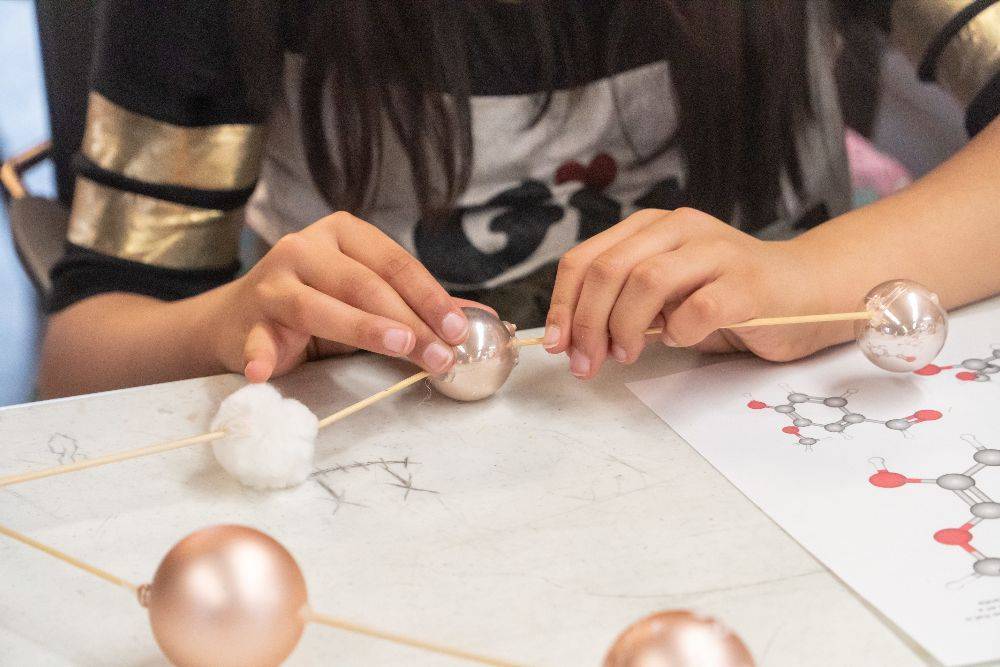
How can I make, do, and learn more while using less? I try to ask myself this question in all aspects of my life: How can I reduce the plastic I use to transport my food? What clothes (and camping gear) can I buy used instead of new? Can I transform my trash into art? As a graduate student studying chemistry at the University of Utah, I also frame my research in this context. How can I reduce the waste generated in the lab? Can I make computer models that teach me about chemical reactions without actually running them?
I share this environmental ethic with many people and organizations seeking to minimize waste while maximizing creativity and human connection. One such organization is Clever Octopus, a creative reuse center in Salt Lake City, UT. Clever Octopus is a nonprofit group committed to creativity and environmental awareness, which they achieve by collecting and selling used art supplies, in addition to hosting art classes and youth programs. I had the incredible opportunity to connect over these shared values by partnering with Clever Octopus to put on an art class at an afterschool program hosted by Promise South Salt Lake.
I met with Clever Octopus art instructors and program coordinators at their new facility, a massive warehouse filled with more art supplies than I could have imagined. After the grand tour, we sat down to brainstorm how we could integrate chemistry into a creative reuse art project. I was inspired by a central theme in my graduate research, the importance of the geometric configuration of molecules as they undergo chemical reactions. The Clever Octopus staff helped me take this idea and transform it into an art project that the students attending the afterschool program could get done in about an hour while utilizing the donated supplies on hand at Clever Octopus. We decided to gather a variety of materials that could be transformed into 3D representations of molecules. Specifically, we searched the facility for items like pom-poms, ornaments, pipe cleaners, bamboo skewers, and plastic straws to use as the atoms and bonds that make up molecules. I did a trial run of the craft using pipe cleaners and pom-poms and was excited to share the project with the students at Promise South Salt Lake.
The instructor from Clever Octopus and I brought our salvaged materials to the afterschool program, where we were met by a group of very excited and energetic young crafters. To relate the relevance of chemistry to day-to-day life, we focused on building menthol, cinnamaldehyde, and vanillin, molecules that have prominent smells and are widely used in consumer products like toothpaste, candy, and flavorings. As the students began the activity, I quickly realized I did not run all of the necessary control experiments. While the pom-poms made ideal “atoms” when hot-glued, it was incredibly challenging to glue some of the other materials together.
I was very fortunate to be supported by staff from both Clever Octopus and Promise, as the difficulties with materials meant most students required significant assistance in building their molecules. Having one-on-one conversations while helping students was one of the highlights of the activity. In these conversations, I tried to relate ways they were overcoming the challenging aspects of the activity to the processes that scientists use to do research. We connected over this, and also over mutual interests outside of art and science, like reading and biking.
Although the creative reuse project turned out to be more challenging than anticipated, with a bit of patience, teamwork, and a lot of hot glue, most crafters were able to go home with a finished molecule. I was also successful in meeting my primary engagement goal for the activity, connecting with participants over shared interests and values. One-on-one conversations with students were instrumental in achieving this goal, as they presented an appropriate venue to chat without slowing down progress on molecule building. In just an hour we connected as we transformed a pile of junk into some wonderful chemical creations, learning and overcoming challenges in the process.
I would like to thank Clever Octopus and Promise South Salt Lake for the incredible opportunity to connect my interests in chemistry, science communication, and art. The success of my engagement activity was in large part due to the support of these organizations and the hard work of their staff.
For more information about Clever Octopus and Promise SSL, see the links below:
http://www.cleveroctopus.org/creative-reuse-center
http://www.southsaltlakecity.com/department-listings/promise-ssl/neighborhood-centers–afterschool-programs
http://www.cleveroctopus.org/blog/2020/2/21/clever-octopus-creative-reuse-center-celebrates-new-south-salt-lake-location-with-ribbon-cutting-ceremony
About the Blog
Discussion channel for insightful chat about our events, news, and activities.
Categories
Featured Posts
Tag Cloud
- UoG (2)
- Guam (2)
- ethnobotany (1)
- environmental policy (1)
- student immersion (1)
- engineering (1)
- Virgin Islands (1)
- USVI (2)
- lionfish (1)
- children's home (1)
- conservation (1)
- marine ecology (1)
- youth (1)
- sustainability (2)
- Utah (1)
- Arizona (1)
- Nevada (1)
- southwest (1)
- virtual (1)
- project management (1)
- training (1)
- naturalist (1)
- forest (1)
- ecosystem (1)
- Puerto Rico (1)
- Spanish (1)
- library (1)
- Huntington's (1)
- medical science (1)
- Emmanuel Ngwoke (1)
